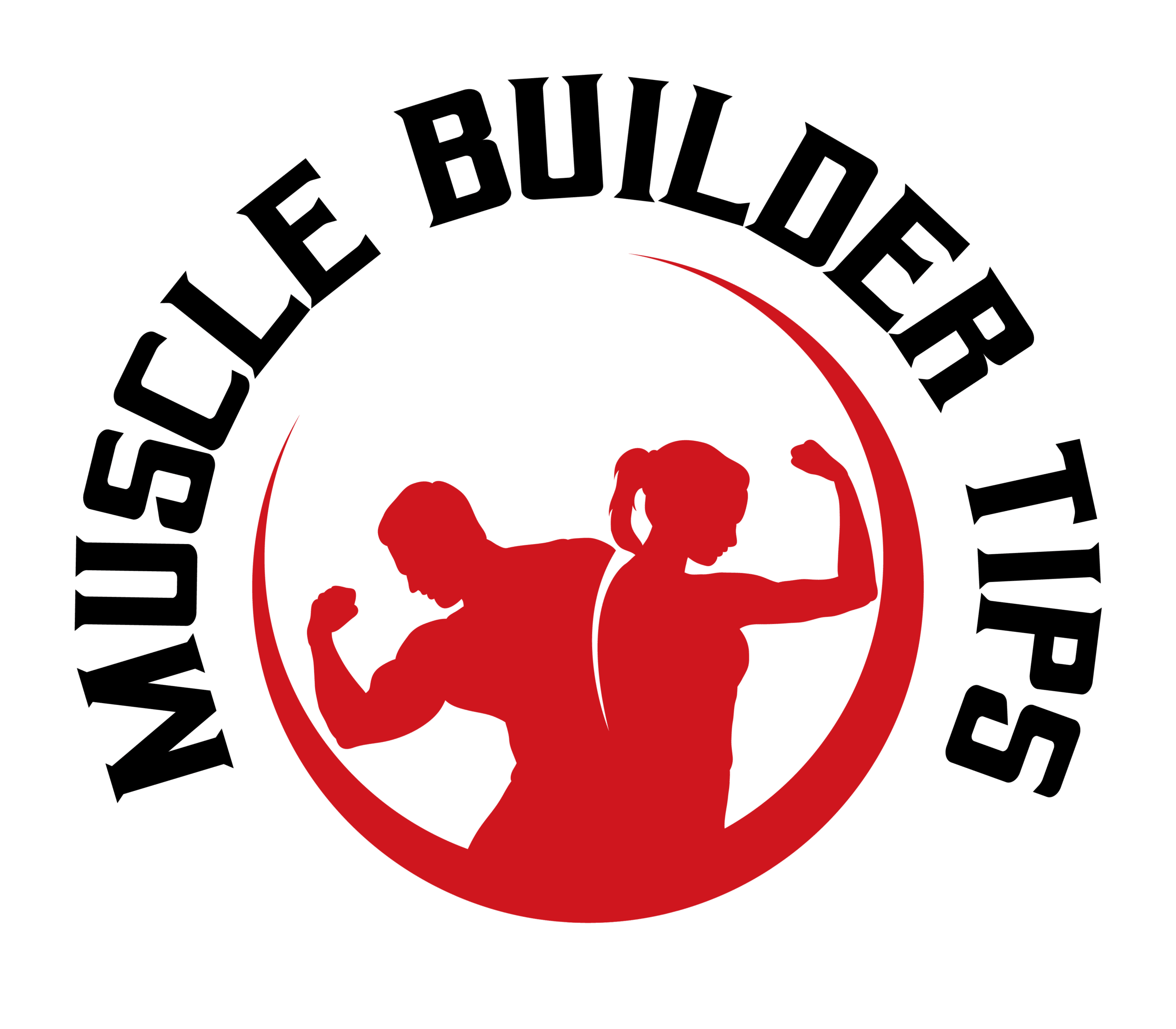
Have you ever wondered how long it takes to build muscle as a woman? Maybe you’ve been hitting the gym regularly and putting in the hard work, but you’re not seeing the results you want as quickly as you’d like. Well, you’re not alone! Building muscle is a process that takes time and patience, but the good news is that it is definitely possible for women to build muscle and achieve their fitness goals.
Building muscle for women is not much different from building muscle for men. It requires a combination of strength training, proper nutrition, and consistency. The time it takes to see noticeable muscle growth varies from person to person and depends on various factors such as genetics, training intensity, and diet. In general, it can take several months to a year of consistent training and dedication to start seeing significant muscle gains. However, it’s important to remember that everyone’s body is different, so results may vary. In our article, you’ll learn more about the factors that influence muscle growth and get some tips on how to maximize your efforts in the gym. So keep reading to discover how long it takes to build muscle for a woman and how you can reach your fitness goals.
How Long Does It Take To Build Muscle For A Woman
Building muscle is a goal that many women have, whether it’s to enhance their physical strength, improve athletic performance, or simply achieve a more toned and sculpted physique. However, there is often confusion and misconception surrounding how long it takes to see noticeable muscle growth in women. In this article, we will explore the factors that influence muscle building in women, set realistic expectations, discuss effective workout routines, address nutrition strategies, and provide tips for tracking progress and making adjustments along the way.
Factors That Influence Muscle Building in Women
Before delving into the timeline for muscle growth, it’s important to understand that several factors can influence how quickly women build muscle. These factors include genetics, age, hormone levels, training intensity, nutrition, and overall lifestyle. While genetics and age may be beyond our control, we can make adjustments to other variables to optimize muscle building potential.
Different Types of Muscle Growth
Muscle growth occurs in two primary ways: hypertrophy and hyperplasia. Hypertrophy refers to an increase in the size of existing muscle fibers, while hyperplasia involves an increase in the number of muscle fibers. In women, hypertrophy is the most common form of muscle growth, and it occurs as a result of strength training exercises that cause microscopic damage to muscle fibers. This damage triggers the body’s repair response, leading to the growth and strengthening of the muscles.
The Role of Hormones in Muscle Building
Hormones play a crucial role in muscle building for women. Testosterone, primarily found in higher levels in men, is the hormone responsible for promoting muscle growth. However, women also produce testosterone, albeit in smaller amounts. Other hormones like estrogen and growth hormone also contribute to muscle building. It’s important to note that hormonal levels can vary among individuals, affecting the speed and degree of muscle growth.
Setting Realistic Expectations
When it comes to building muscle, patience is key. It’s essential to set realistic expectations and understand that muscle growth takes time and consistency. The journey to building muscle is not a sprint; it’s a marathon.
Importance of Patience in Muscle Building
Muscle building is not an overnight process. It requires consistent effort and dedication over an extended period. It’s common for women to start seeing noticeable changes in muscle definition and strength within 8 to 12 weeks of consistent training and proper nutrition. However, individual results may vary.
Factors That Affect the Speed of Muscle Growth
Several factors can influence the speed at which women build muscle. These include genetics, age, training intensity, nutrition, and recovery. While genetics and age are factors that cannot be changed, optimizing training intensity, nutrition, and recovery can help maximize muscle growth potential.
Average Timeline for Visible Muscle Gain
On average, it can take anywhere from 3 to 6 months of consistent training and nutrition to see visible muscle gain in women. However, it’s important to note that this timeline can vary significantly depending on the individual’s starting point, genetics, and adherence to their workout and nutrition plan.

This image is property of pixabay.com.
Designing an Effective Workout Routine
A well-designed workout routine is crucial for building muscle. Here are some key considerations when designing your workout routine:
Choosing the Right Exercises for Muscle Building
To effectively build muscle, it’s important to incorporate a variety of exercises that target different muscle groups. Compound exercises, such as squats, deadlifts, bench presses, and pull-ups, are particularly effective as they engage multiple muscle groups simultaneously.
Understanding Repetitions and Sets
Repetitions and sets refer to the number of times an exercise is performed and the number of cycles of repetitions completed, respectively. For muscle growth, it is generally recommended to perform 8-12 repetitions per set, with 3-4 sets per exercise. This range promotes muscle hypertrophy and strength development.
Importance of Progressive Overload
Progressive overload is a fundamental principle in muscle building. It involves gradually increasing the intensity, volume, or difficulty of your workouts over time. This can be achieved by increasing the weight lifted, the number of repetitions performed, or the training frequency. Progressive overload ensures that your muscles are continually challenged and stimulated for growth.
Nutrition and Muscle Building
Proper nutrition is essential for muscle building in women. Here are some key considerations:
The Role of Protein in Muscle Growth
Protein is the building block of muscles, and consuming an adequate amount is crucial for muscle growth. Women engaged in strength training should aim to consume around 0.8-1 gram of protein per pound of body weight daily. Good sources of protein include lean meats, poultry, fish, eggs, dairy products, legumes, and plant-based proteins like tofu and tempeh.
Optimal Caloric Intake for Muscle Building
To support muscle growth, it’s important to ensure a slight caloric surplus. A surplus of 250-500 calories per day can provide the necessary energy and nutrients for muscle repair and growth. However, it’s important to be mindful of overall calorie intake to avoid excessive weight gain.
Importance of Balanced Diet and Micronutrients
While protein plays a crucial role in muscle growth, it’s important to maintain a balanced diet that includes carbohydrates, healthy fats, vitamins, and minerals. Carbohydrates provide energy for workouts, while healthy fats support hormone production and overall health. Adequate intake of vitamins and minerals is important for optimal muscle function and recovery.

This image is property of pixabay.com.
Training Strategies for Women
When it comes to training strategies, women should consider the following:
Weightlifting vs. Bodyweight Exercises for Women
Both weightlifting and bodyweight exercises can be effective for muscle building in women. Weightlifting with free weights or machines allows for progressive overload and targeted muscle training. Bodyweight exercises, such as push-ups, pull-ups, and lunges, can also be effective, especially for beginners or those without access to gym equipment.
Incorporating Cardiovascular Training
Cardiovascular training is an important aspect of overall fitness but should be balanced with strength training for optimal muscle growth. Incorporating 2-3 cardiovascular sessions per week, such as running, cycling, or swimming, can help improve cardiovascular health and aid in recovery.
Training Frequency and Rest Days
Training frequency depends on individual preferences, goals, and recovery capabilities. Women looking to build muscle should aim for strength training sessions 3-4 times per week, with rest days spread throughout the week. It’s crucial to allow sufficient rest and recovery for the muscles to repair and grow.
Avoiding Common Mistakes
To avoid hindered progress and potential injury, women should be mindful of the following mistakes:
Overtraining and Its Negative Effects
Overtraining occurs when the body does not have enough time to recover between workouts. This can lead to decreased muscle growth, increased risk of injury, hormonal imbalances, and burnout. It’s important to listen to your body and allow for adequate rest and recovery.
Not Prioritizing Recovery
Recovery is just as important as the workout itself. Proper recovery allows the muscles to repair and grow stronger. Strategies for recovery include getting enough sleep, practicing stress management techniques, and incorporating activities like stretching, yoga, or foam rolling.
Skipping Warm-up and Cool-down
Warming up before a workout and cooling down afterward are crucial for injury prevention and optimal muscle function. A proper warm-up increases blood flow, loosens up muscles, and prepares the body for exercise. Similarly, a cool-down helps the body gradually transition to a resting state, reducing muscle soreness and promoting recovery.

This image is property of pixabay.com.
Addressing Specific Concerns for Women
Women often face specific concerns and challenges when it comes to muscle building. Here are some common concerns and strategies to address them:
Myths and Misconceptions about Women and Muscle Building
There are many myths and misconceptions surrounding women and muscle building, such as the fear of becoming bulky or masculine. However, due to lower testosterone levels compared to men, women typically do not develop significant muscle mass without specific training programs and nutrition strategies. Women can achieve a lean, toned, and strong physique through resistance training.
Dealing with Body Image and Societal Pressure
Building muscle should be driven by personal goals and desires, rather than societal pressure or seeking validation from others. It’s important to focus on the positive impact that strength training has on overall health, well-being, and self-confidence. Surrounding yourself with a supportive community can also help overcome body image concerns.
Managing Hormonal Changes and Menstrual Cycle
Hormonal changes throughout the menstrual cycle can impact energy levels, performance, and recovery. It’s important to listen to your body and adjust your training and nutrition accordingly. Prioritizing rest, focusing on recovery strategies, and maintaining good nutrition can help manage the symptoms and support the muscle-building process.
Supplementation and Muscle Building
While it’s possible to build muscle without supplements, some women may choose to incorporate them into their routine. When considering supplementation, it’s important to consult with a healthcare professional to determine individual needs and ensure safety and effectiveness. Some commonly used supplements for women include protein powders, creatine, and branched-chain amino acids.

Tracking Progress and Making Adjustments
Tracking progress is essential for staying motivated and making necessary adjustments to your workout and nutrition plan. Here are some key strategies:
Measuring Muscle Gain and Strength Progression
Keeping track of progress can be done through various methods, including measuring body composition changes, taking progress photos, and monitoring strength improvements. Keeping a workout log can help track the weights lifted, repetitions performed, and overall progress over time.
Adapting the Workout Routine Over Time
As the body adapts to the training stimulus, it’s crucial to change and progress the workout routine. This can include increasing the weights lifted, varying the exercises, or altering the training frequency. Regularly challenging the muscles in new ways helps avoid plateaus and promotes ongoing muscle growth.
Reassessing Nutrition and Lifestyle Factors
It’s important to regularly reassess and adjust nutrition and lifestyle factors to support muscle building. This includes evaluating caloric intake, macronutrient distribution, meal timing, and overall lifestyle habits. Consulting with a registered dietitian or nutritionist can provide personalized guidance and support.
Conclusion
Building muscle for women is a journey that requires consistency, patience, and dedication. By understanding the factors that influence muscle growth, setting realistic expectations, designing an effective workout routine, prioritizing nutrition, addressing specific concerns, and tracking progress, you can maximize your muscle building potential. Celebrate your personal achievements and progress along the way, and remember that each woman’s timeline for building muscle is unique.
